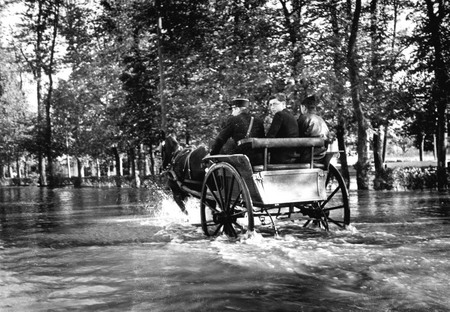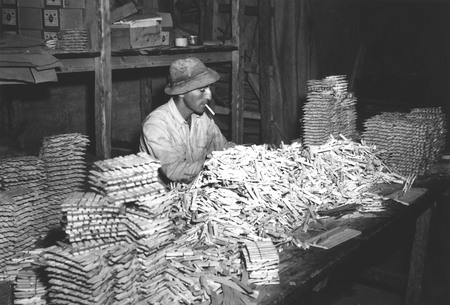Pierre Boulat. Retrospective














Pierre Boulat. Arrest in Vichy, France. 1942. © Pierre Boulat / COSMOS
Pierre Boulat. Egyptians taste Pepsi Cola. Cairo, Egypt. 1946. © Pierre Boulat / COSMOS
Pierre Boulat. Berlin right after the war: a man walking in the street with brand new shoes bought in the United States in 1939. 1945. © Pierre Boulat / COSMOS
Pierre Boulat. Arrival of Mac Millan to the Elysée Palace to summit. Paris. May , 1960. © Pierre Boulat / COSMOS
Pierre Boulat. A couple at wedding. Wedding Berichone, France May , 1945. © Pierre Boulat / COSMOS
Pierre Boulat. Young Israeli makes clothespegs in kibbutz. Israel May , 1946. © Pierre Boulat / COSMOS
Pierre Boulat. Look of Frenchman at American women. USA. Reflection of Pierre Boulat at mirror in New York shoporkais. May , 1957. © Pierre Boulat / COSMOS
Pierre Boulat. Cadets of West Point ‘Beast Barracks’. USA. Dancing lesson. May , 1957. © Pierre Boulat / COSMOS
Pierre Boulat. Cadets of West Point ‘Beast Barracks’. USA. First day May , 1957. Face to face with captain instructor. ‘You have one month to take away your double chin’… ‘Yes Sir!’ © Pierre Boulat / COSMOS
Pierre Boulat. Federico Fellini at time of shooting «Juliette and Spirits» at studio Cinecita in Rome. May , 1964 © Pierre Boulat / COSMOS
Pierre Boulat. Man Ray in front of his own work at the exhibition in Parisian Gallery. May , 1954. © Pierre Boulat / COSMOS
Pierre Boulat. Aristotelis Onassis at his yacht in Monte Carlo May , 1955. © Pierre Boulat / COSMOS
Pierre Boulat. François Truffaut among his films collection May , 1981. © Pierre Boulat / COSMOS
Pierre Boulat. Yves Saint-Laurent on steps of house in Marrakech May , 1976. © Pierre Boulat / COSMOS
Moscow, 26.03.2010—25.04.2010
exhibition is over
Moscow Museum of Modern Art
Tverskoy boulevard, 9
Mon.-Sun. 12:00 - 20:00; Ticket Office closes at 19:15
Share with friends
Collection family Boulat, Paris
Presented by Pierre and Alexander Boulat Foundation
Supported by: Culturesfrance
and Novatek.
For the press
<< Back to Pierre Boulat. Retrospective
Pierre Boulat:
Pierre Boulat was born on June 3 1924, in a small village in Seine-et-Marne. You might say he was born holding a camera, since throughout his life photography governed everything he saw, thought, acted and wrote. He set up a small laboratory to develop amateur snaps in 1938 and began taking identity photos for the local town hall. In 1940 he started a course at the Ecole Nationale de Photographie et de Cinema in Paris and graduated in 1943, the best student of his class. To avoid forced labour in Germany he moved from occupied France to the free zone of Vichy, working for the SCP state photography service.
Immediately after the French liberation from Nazi occupation Pierre Boulat found work as a photographer for the weekly magazine’Samedi Soir’, then with’France-Dimanche’,’Elle’ and’Paris-Presse’, covering portraits, crime and current affairs. He grew familiar with the Middle East and made his first trip to the USA, where he spent four months.
In 1948 Boulat travelled to Cairo, where he published his book’Images of Egypt’. On his return to Paris in 1950 he opened a fashion studio and worked freelance for the Parisian and American press. He produced a series of reportages for the weekly’Look Magazine’ entitled’Petit Hotel a Paris’,’Le Quartier de la Goutte d’Or’ and’L’enfance perdue’, for which he received an Encyclopaedia Britannica award.
From 1955 Pierre Boulat worked for the prestigious American’Life’ magazine, where he signed his first exclusivity contract in 1957. His collaboration with’Life’ continued until the magazine closed in December 1972. Boulat’s themes included news, politics, fashion, celebrity portraits and photo reporting from all over the world.
During this period he produced several scoops. He became the first Western journalist to visit the USSR after the Second World War (1955) and post-revolutionary China (1964). Boulat also compiled the famous reportages’West Point Academy, USA’ (1957),’View of American Women’ (1957),’Palestinians’ (1970) and’Fight against Drugs’ in the Mediterranean (1970).
At the same time he shot several cover photos for’Time Magazine’.
In 1972 Stanley Kubrick chose Pierre Boulat as photographer for the first part of his film’2001: A Space Odyssey’.
After’Life’ magazine folded Pierre Boulat received 200 kg of archive material — black-and-white and colour negatives now preserved in the Cosmos agency archives. He again turned freelance, issuing a book about the Sahara Desert for’Time Life Books’ and working by contract with’People Magazine’ for the next five years. He was also a correspondent for’Smithsonian’ and magazines including’Geo’,’Le Figaro Magazine’,’Actuel’,’Newton au Japon’ and’Le National Geographic Magazine’, for whom he produced a large-scale reportage on Carrare. He collaborated on several joint projects:’A Day in the Life of Australia’,’Hello Singapore’ and’3 Days in France’. Boulat was catalogue photographer for the 1984 exhibition of work by couturier Yves Saint Laurent at the Metropolitan Museum in New York.
In 1982 Pierre Boulat began a ten-year collaboration with’Paris Match’ which enabled him to develop his skills as a master of large-scale photo reports. This included features on Richard Wagner, Liszt, the First Crusade, Margaret Mitchell... a fashion report on the 20th anniversary of Yves St Laurent’s creative career, and photo essays on ’The Life of the French in 2017′, the Danube and the voyage of Christopher Columbus. Two of his reportages for’Paris Match’ were the subject of exhibitions:’The Normandy Landing’ at the Olympus Gallery, Forum des Halles, in 1984; and the three-part’French Revolution’ at the Canon Gallery, Plateau Beaubourg (1988).
Pierre Boulat participated in the’Visa pour l’Image’ festival at Perpignan in 1992 with his exhibit’My Years with’Life’ — 50 Years of Photos’. Also in 1992 he published a book of the same name. This exhibition was subsequently shown by regional departments of the national contemporary art foundation (FNAC), the La Chambre Claire Gallery in Paris and the Bordeaux festival’Arret sur l’Image’ in April 1993.
In 1992 the Les Procedes Gallery in Vanves presented an exhibition of Pierre Boulat’s work entitled’Women’. He exhibited’Perpignan, C’est Ca!’, work specially created for the Perpignan festival’Visa pour l’Image’ (1993), and in 1994 received the’Chevalier of Arts and Letters’ medal.
FNAC has acquired about a dozen of his fashion photos as well as his series on North Africans in Paris.
The same year Pierre Boulat began work on ’The Aging of a Sommelier’s Nose’, a volume of mainly black-and-white and a few colour photographs on wine and taste based on Lyonel, the sommelier at Bernard Loiseau’s restaurant. He also published the book’Good Night, Pierre’, a humorous and imaginary sequel to his work as a journalist (exhibited at the Natalie Seroussi Gallery in Paris).
At the end of his life Pierre Boulat suffered from Parkinson’s disease and he died on January 11 1998, after devoting 60 years of his life to an illustrious career as photo journalist. He is represented by the Cosmos agency.




